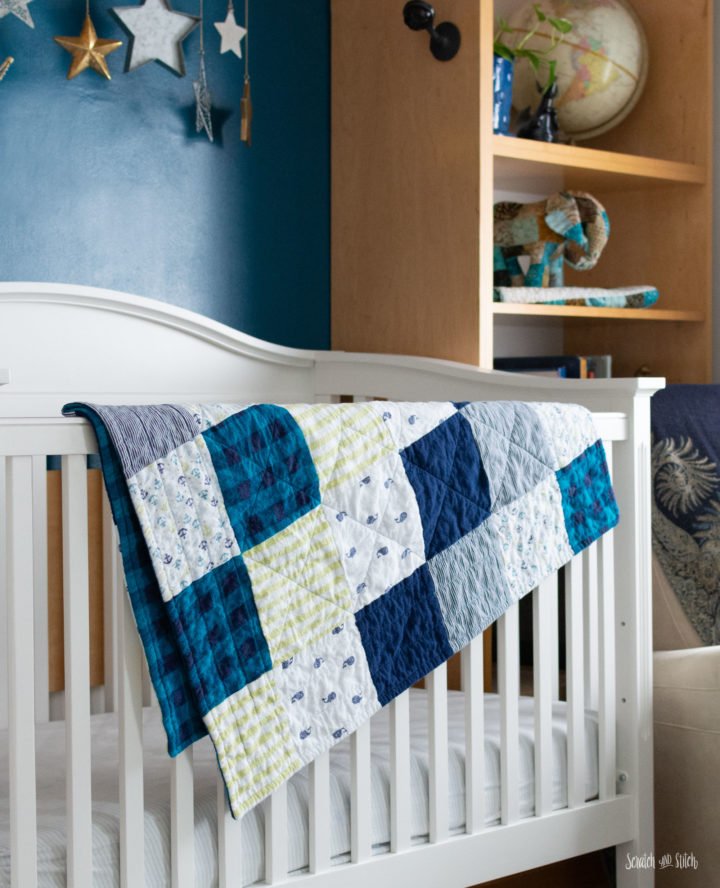
New babies often get dozens of receiving blankets as gifts. Using coordinating colors and fabrics to sew a quilt can make a special gift that baby and family will love.
Making a baby quilt out of receiving blankets can be a great gift for a new baby. Receiving blankets tend to be soft flannel, and come in many fun colors and prints. Most parents receive too many of these blankets as gifts for a new baby and can’t use them all. For someone with a basic knowledge of sewing, this won’t be difficult at all.
Sewing the quilt with a baby’s old receiving blankets can make the gift extra meaningful. It’s also a great way to use up old receiving blankets. For more ways to use up extra receiving blankets, please read 7 Ways to Use Receiving Blankets.
Color Scheme
Receiving blankets are often sold in packs of multiple blankets that coordinate. They will have similar patterns, colors, and designs. Using a set of these blankets can help result in a nice looking quilt. But as long as the colors are all in the same family, it won’t matter if different patterns or brands are used.
As with any scrap quilt, the quilt design can be as random or as organized as the quilter wants. For someone new to sewing or quilting, it will probably be easiest to just cut the blankets into same sized squares. The smaller the squares, the more sewing there will be. Since the quilt will be crib-sized, the squares shouldn’t be too large. Three inch squares are as good size. A traditional crib quilt is about 45″x60″.
One option is to have a thick stripe of the same fabric going around the outside edge. Alternately, the quilted pieces could extend right to the edge, although this requires more sewing, piecing, and cutting. After the pieces are all cut, they should be laid out or pinned together to get an idea of how the final quilt will look.
Quilt Sewing
In order to sew a quilt, you will need needles, thread, and some sort of inner layer, or batting. Batting is available in polyester or cotton varieties. If cost is an issue, the inner layer could even be made from another blanket or spare fabric. Foregoing an inner layer will just result in a thin quilt.
The back of the quilt should be basic, but again, there are no rules. The average receiving blanket is usually between 24″x24″ and 36″x36″. Therefore, it will not be possible to use one blanket for the back. You can either buy some new flannel fabric to have a continuous layer on the back, or else you can sew several receiving blankets together for the back. Many babies and children will love looking at as many different colors and patterns as possible.
The top pieces should be sewn together first. After it is done, the quilt should be assembled with the backing, then the batting, followed by the top layer. A binding edge layer should be sewn around the outside to secure all pieces together and to prevent fraying along the edge.
The sewing and quilting can be done by machine or by hand. If same sized squares are used, it will be easy to sew using a machine. The amount of quilting (sewing through all layers together) depends on the quilter. It can be as simple as using embroidery thread to sew several knots throughout the quilt top, or as complex as sewing many patterns all over the squares and edges.
Using a child’s old receiving blanket to make a quilt can be a very meaningful gift for the child. Reusing old blankets prevents waste, and makes an affordable gift. This handmade gift will be cherished by the recipient.
